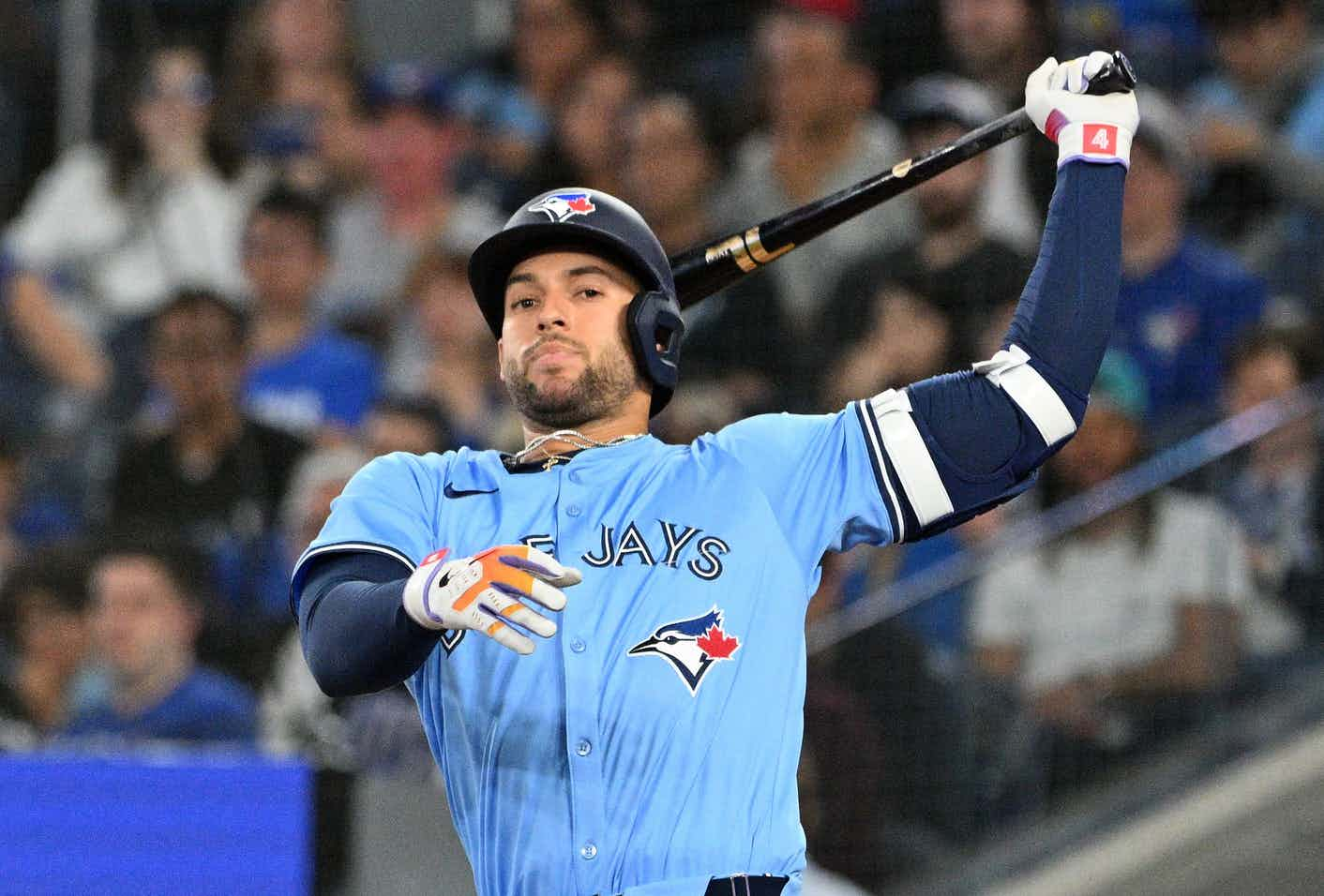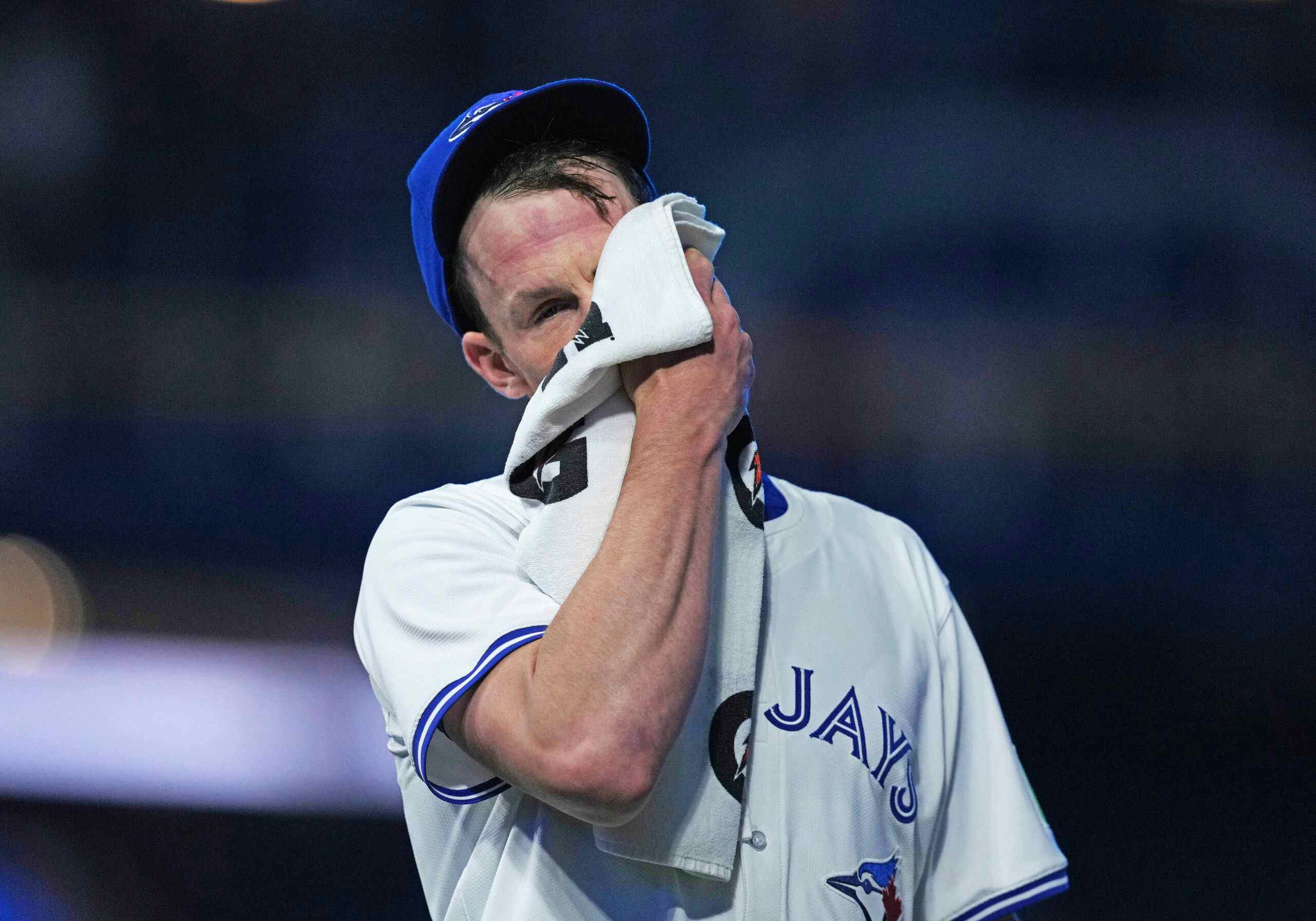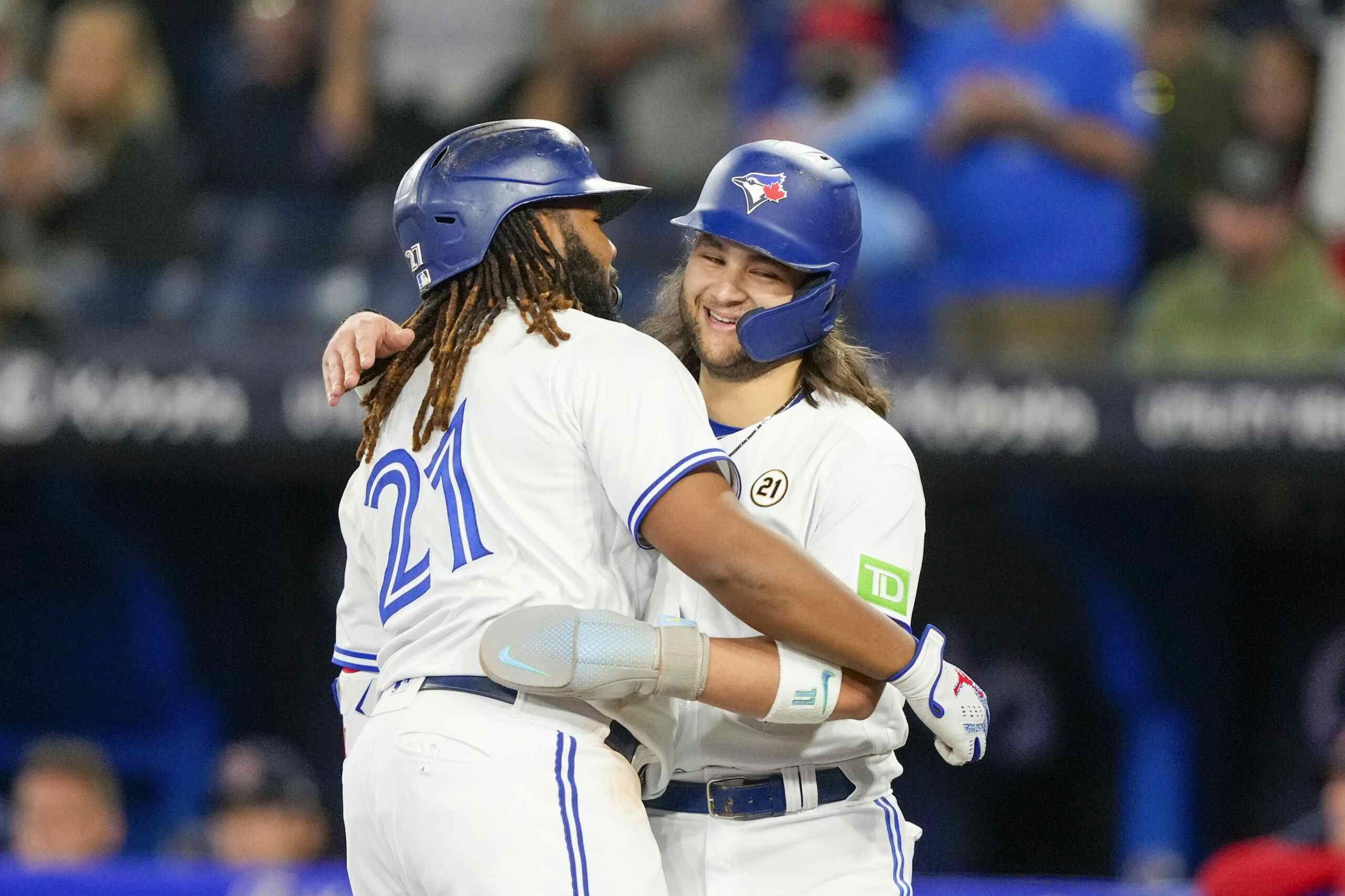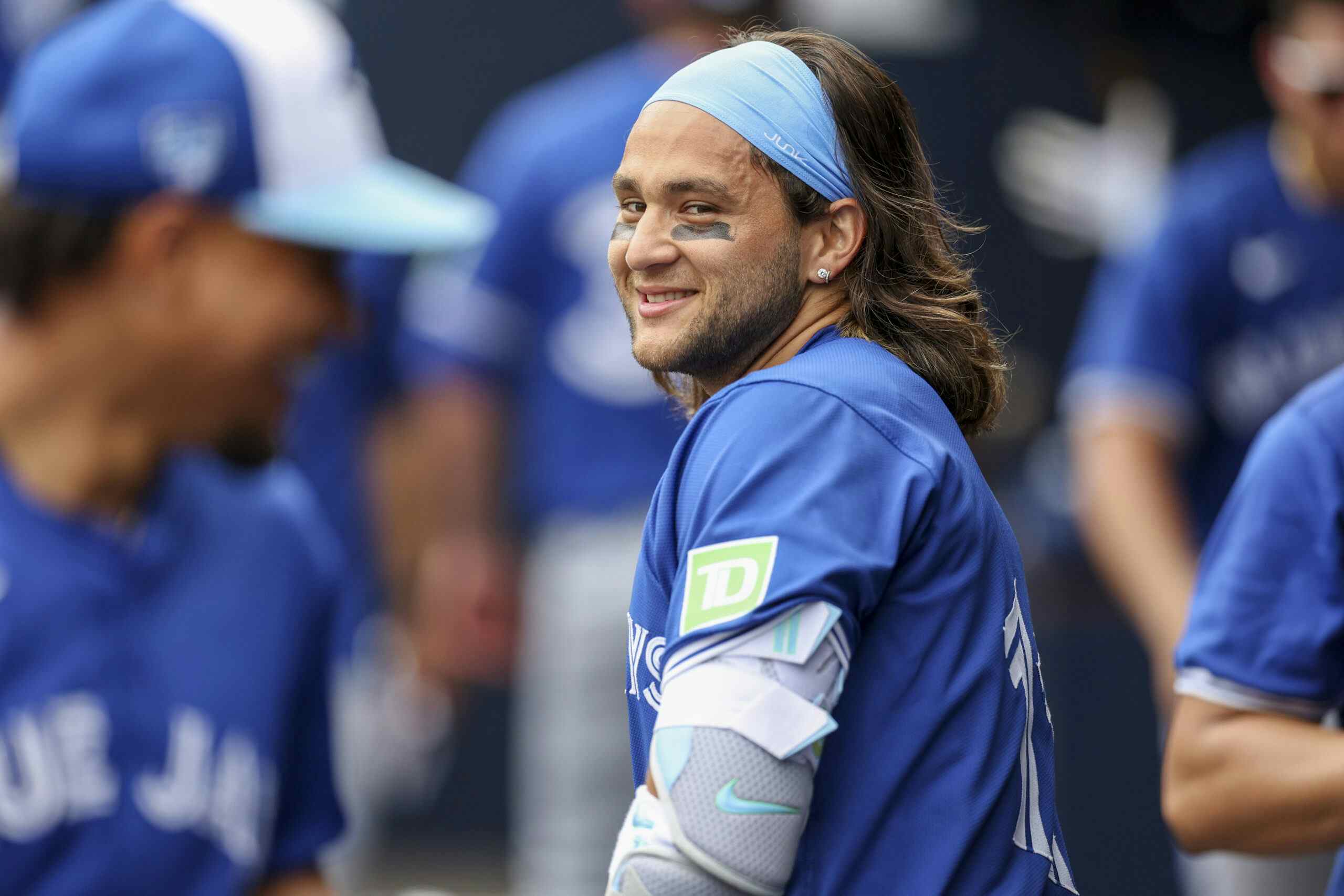Daily Duce: Bigger post-season? No draft? Pro-rated service time? The ripple effects of MLB’s COVID-19 play stoppage
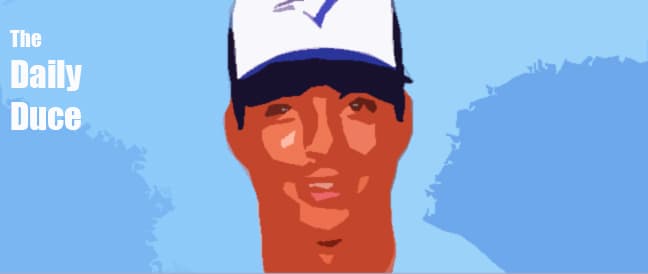
By Cam Lewis
4 years agoDaily?!?!
Yesterday marked the first day of spring. It doesn’t feel like spring.
Everybody is cooped up inside in order to ease the spread of COVID-19, wondering how long it’ll be until things become normal again.
In the grand scheme of things, baseball is incredibly low on the list of things that actually matter. But for those of us who love this silly sport, those of us who wait around through the dark, cold days of winter, staring out the window, waiting for the snow to melt and for baseball to signal warmer, better times, baseball’s hiatus has been another depressing ramification of the pandemic.
Last week, Major League Baseball announced that spring training would be cancelled and that Opening Day would be pushed back for a couple of weeks. On Monday, after the Centers for Disease Control and Prevention restricted gatherings of 50 or more people for 60 days, MLB announced that the season won’t get started until at least mid-May. At this point, that even seems wildly optimistic.
So, what now? All we can do is wait. And, of course, stay inside, wash our hands, and be careful.
But while the NHL and NBA are figuring out how they’re going to complete the last few games of their regular seasons and fit playoffs and award a championship into a tight window, MLB is wrestling with how they’re going to have a season altogether and the ripple effects that come with this unpredictable pause.
The best-case-scenario right now would be having Opening Day on Memorial Day weekend in late-May. Again, that’s optimistic.
The United States saw 4,530 new cases of COVID-19 yesterday and those are just cases that have been tested positive. There are surely plenty of other people with the disease that haven’t been given a test. Many sources have indicated at the U.S. is a couple of weeks behind Italy’s trajectory. Right now, Italy is in full shutdown mode with only groceries and pharmacies open to the public. A model created by British epidemiologists projects that inadequate suppression of the virus would result in a colossal spike that peaks in mid-May.
I’m not going to pretend to be any kind of expert on this situation, but it’s difficult to look at what’s happened elsewhere in the world and expect this all to be swept under the rug in a couple of months.
Despite this, MLB seems to still want to play a 162-game schedule. That seems to be the goal here, even if it involves shoving the season into the fall and winter and playing in neutral locations. Yankees’ manager Aaron Boone appeared on ESPN radio the other day, suggesting that MLB is willing to get creative in order to get as many games in as possible.
“They’re going to want to try to get in as many games as possible, so it’s going to tack on to the end of the season. The season is going to carry on longer, so you’re going to potentially be in warm weather spots or domed situations. That may lend itself to some neutral-site situations. This is an opportunity to be creative; maybe at the end of it all we’ll get to look at it and say, ‘Hey, this worked, this is something we’d like to implement moving forward.'”
But the further you push the start date back, the more difficult, obviously, it becomes to fit in those 162 games. Let’s say we can start the season on July 1. That would mean, operating at a normal pace, the 162-game season would go until the end of November and the playoffs would happen in December. Would the 2021 season just get up and rolling in mid-February when pitchers and catchers report as usual?
MLB obviously wants to maximize its schedule for the sake of revenue (and, to a lesser extent, maintaining the consistency of a 162-game season for records and such), but, at some point, it becomes unrealistic. We’re navigating into uncharted waters here.
Another key question is what a post-season would look like. The reality of operating with a shortened season is increased randomness of the standings. If the season was only 81 games last year, Texas would have made the playoffs instead of Oakland in the American League and Colorado, Chicago, and Philadelphia would have made it in the National League instead of Milwaukee, St. Louis, and, the eventual champions, Washington.
Over at FanGraphs, Dan Szymborski used his ZiPS model to dig into how much a shortened season would affect the standings. In a 162-game season, the Blue Jays have a 0.9 percent chance of making the playoffs. If you cut the season in half to 81 games, that likelihood rockets up to a 16.7 percent chance. I mean, I’m not complaining, but the Yankees, Dodgers, and other contending teams might think otherwise.

So, what’s the solution? One idea I’ve seen floated around is a bigger post-season field. It would help compensate for the loss of regular-season games, adding gate and TV/streaming revenue for the league and teams, and it would ensure that good teams aren’t totally swamped by a slow start, a key injury, or a cold streak.
There’s been plenty of talk about how MLB wants to expand its playoffs, so this would be the chance to try something new. Remember this? It feels like a lifetime ago this was being discussed, but it was only last month…
MLB is seriously weighing a move from five to seven playoff teams in each league beginning in 2022, The Post has learned.In this concept, the team with the best record in each league would receive a bye to avoid the wild-card round and go directly to the Division Series. The two other division winners and the wild card with the next-best record would each host all three games in a best-of-three wild-card round. So the bottom three wild cards would have no first-round home games.The division winner with the second-best record in a league would then get the first pick of its opponent from those lower three wild cards, then the other division winner would pick, leaving the last two wild cards to play each other.
I don’t know if they would actually do the reality-TV-style thing this year, but expanding the field to 14 teams isn’t a bad idea. If there was ever a chance to be creative and try something new, it’s now.
There’s also the issue of the All-Star Game, which is supposed to take place in Los Angeles at Dodger Stadium in July. If the season starts on July 1, you can’t do All-Star Weekend two weeks into the season. It would have to be pushed back. As would the trade deadline. These are small, scheduling issues we just can’t even think about until we have a better idea of a starting date.
Opening Day, squeezing in 162 games, the post-season, the All-Star game, all of this almost seems superfluous once you really get into the nitty-gritty details of what ripple effects this pandemic will cause. Will there be a draft? Would a shortened season count for a full year of service time? How will contracts with vesting options and specific bonuses work? Are players getting paid? What about Minor Leaguers? And stadium employees?

The Standard Player Contract stipulates that teams can suspend contracts and pay during a “national emergency.” Of course, when Rob Manfred announced that the league would be paused earlier in the week, he used the term “national emergency” in his address.
Following a call with the 30 Clubs, and after consultation with the Major League Baseball Players Association, Commissioner Robert D. Manfred, Jr. today announced that MLB has decided to suspend Spring Training games and to delay the start of the 2020 regular season by at least two weeks due to the national emergency created by the coronavirus pandemic. This action is being taken in the interests of the safety and well-being of our players, Clubs and our millions of loyal fans.
Given the fact the CBA is set to expire soon and there’s a worry of a work stoppage, it probably wouldn’t be wise for MLB to clamp down here. Pissing the players off before CBA negotiations is one thing, but the public relations nightmare that would come from not paying players right now.
But there are still a handful of complicated issues to navigate here. Think about Mookie Betts, for example. The Dodgers acquired Betts from the Red Sox as a one-year rental to make a run at finally getting over the hump and winning the World Series. Betts is poised to become a free agent at the of the 2020 season, so long as he reaches the requisite 102 days of service time required to accrue a full season of work.
Now, this is fairly simple if MLB can play even an 81-game season this year. The MLB and the MLBPA would have to agree to adjust the definition of a full season of service accordingly. But what if there isn’t a season? Would Betts still get to hit free agency? Would the Dodgers get nothing out of that trade? Would it become null, with L.A. getting everyone back from Boston?
According to Joel Sherman, the MLBPA wants players credited with a full year in 2020 if they earned at least 60 days of service in 2019 no matter how many games are played this year. So, if zero games are played, Betts would get to hit free agency due to his service in 2019, leaving the Dodgers with nothing to show for the deal.
Another thing to consider for Betts and other free agents is how much teams will be willing to spend this winter after losing so much revenue on a delayed or cancelled season. Would somebody still shell out $450 million to Betts in free agency after a year without revenue? Maybe? I honestly have no idea.
Other issues MLB is going to have to sort out are contracts with vesting options and incentive-based bonuses. J.A. Happ’s deal stipulates that a $17 million option for 2021 is triggered if he pitches 165 innings or makes 27 starts in 2020. If the season is 81 games, that won’t happen. If it’s cancelled, would they just go off of his 2019 statistics? There are plenty of contracts like this with unique stipulations and many of them will need to be figured out individually rather than with sweeping rule amendments.
The Blue Jays are supposed to select fifth overall at the draft this summer. If there is a draft.
According to the Associated Press, MLB is considering cancelling the draft this year in order to save money. Signing bonuses for players drafted exceed $400 million annually, so skipping the draft would save teams quite a bit of cash. But it would also leave a lot of players in limbo.
What would happen with college seniors? While juniors could stay put for another year, seniors couldn’t just go back and play another season. Would they just hang out and enter the 2021 draft? Would they become free agents? What about high schoolers? An entire class of high school seniors not getting drafted would result in a massive pool of freshmen entering the NCAA at the same time.
It seems that cancelling this draft would be a short-term gain, long-term pain thing. While teams might save cash on bonuses right now and there might be some worry about drafting players who haven’t been adequately scouted, shoving the 2020 and 2021 draft classes together would be a much bigger wrench to throw into the whole thing when you look at the big picture.
So, yeah. That’s a lot. This whole thing is a lot. There are no easy answers here.
I don’t know what to say about most of this because it’s well beyond me, but what I can say with utmost certainty is that this isn’t just going to disappear in a few weeks. We aren’t just going to be self-isolating for a couple of weeks and then going out and watching baseball games in May. The ripple effects of COVID-19 are going to be felt for a long time.
Recent articles from Cam Lewis

